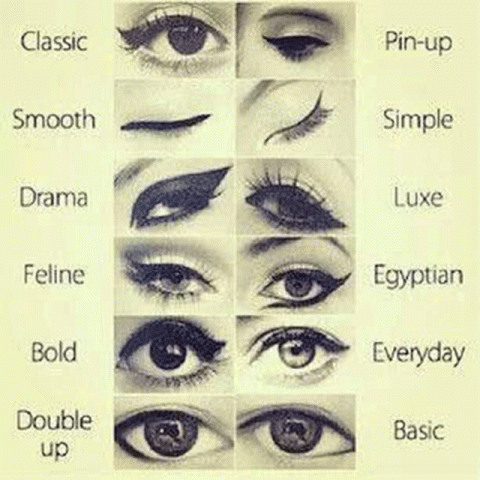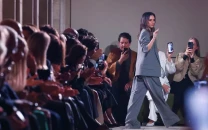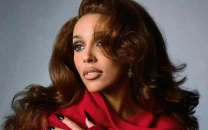Wing it
The winged eyeliner is a slightly complicated trend, even the best struggle with it

Eye-spy the perfect make-up tutorial
To help your winged problem, here are a few things you should familiarise yourself with that will ensure balance and perfection on your eyes with every application. Another thing to be kept in mind is that winged liner does not go well with every eye shape, but worry not there are plenty of other styles that could work well with the shape of your eye.
Types of eyeliners
The pencil
Pencil liner is eyeliner that is easier to apply, but often isn’t smooth enough or pigmented enough for dramatic effects. It’s a decent option for daily use.
The gel
Gel liner has a smooth surface as it glides easily and leaves a classic matte finish. It wears well and is quite forgiving.
The liquid
Liquid eyeliners are used for precise results. It’s usually used for winged eyeliners, leaving a super artsy kind of look.
Eye shapes
Round eyes
These are circular that have more vertical space than horizontal space, making it less suitable for winged eyeliners, what would look chic on such a shape is the classic bar for a noticeable and neat depth.
Almond eyes
The name is self-explanatory. These are shaped like almonds, therefore being horizontally long, making them perfect for the cat-eye/heavy winged eyeliner look.
Thin almond eyes
Are the same as almond eyes but with slightly less space vertically above the eyes, making them adequate for eyeliner styles like the double-up as well as the under-liner.
Round almond eyes
As the name says, they are round but still in the shape of an almond which is giving them both horizontal and vertical space, making them suitable for anything from the basic eyeliner to definitely the bold winged eyeliner.
Hooded eyes
They have zero vertical eye space in terms of eyelids. Hence, it’s best to use a plain softly drawn line to give the basic definition needed to draw attention to them.
Have eyes for white eyeliner
All those wings
Classic: The line begins from above the iris and ends a little after the outer corner of the eye where the line slightly thickens.
Smooth: This line is rounded that follows the lash-line. This is perfect for daily wear.
Drama: Here the black line is quite thick. It covers the whole upper eyelid, while the lower one is blackened as well.
Feline: Here the line is sharp and thin which starts from the inner corner of the eye and is raised on the outer part of the eye.
Bold: The line here is a thick one from start to end, but only on the upper eyelid – a very fashionable look these days.
Double-up: This is a normal line that thickens over in the outer corner of the eye, on the lid as well as the lower lash-line, simultaneously.
Pin-up: The line here is long, starting from the inside the corner of the eye and extending all the way to the outer corner of the eyelid, giving a very Marilyn Monroe look.
Simple: This line is sharp and thin which follows the lash-line.
Luxe: Here you have to highlight the same areas as ‘drama’. The only difference is that the line here is thinner in comparison.
Egyptian: This is a thick double line that slightly curls at the outer corner of the eye. While it goes downwards from below the eyelid line.
Every day: The line here is a plain one that thickens at the middle of the eyelid, right above the iris, making the eyes look bigger.
Basic: This is a thin line that starts from the beginning of the lash-line and follows all the way through on both the upper eyelid and partly the lower one.
Published in The Express Tribune, Hi Five, June 26, 2016.



















COMMENTS
Comments are moderated and generally will be posted if they are on-topic and not abusive.
For more information, please see our Comments FAQ